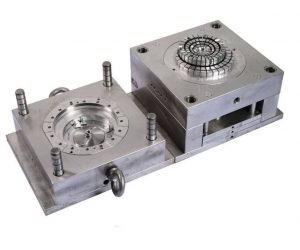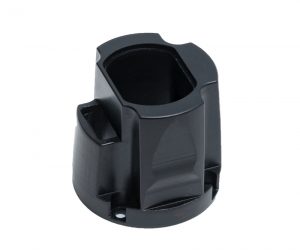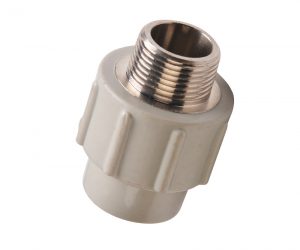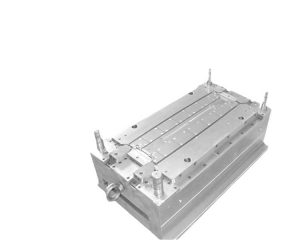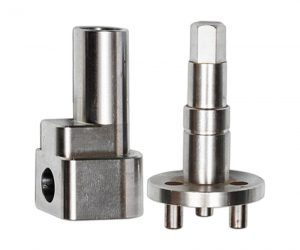In the world of manufacturing, particularly in injection molding, the quest for excellence never ceases. Reducing mold processing defects and enhancing the performance of workpieces is a multifaceted endeavor that demands attention to detail and a systematic approach. With my years of experience in this field, I've seen firsthand how certain strategies can make a significant difference. Let’s dive into a variety of techniques that can be implemented to achieve these goals.
Material Selection
Selecting the right materials is the cornerstone of successful mold processing. High-quality materials tailored for specific applications not only withstand the rigors of processing but also enhance the final product's durability. For example, using engineering-grade plastics can dramatically improve resistance to wear and tear compared to standard materials. Always consider the environmental conditions your materials will face—such as temperature and pressure—and choose accordingly to mitigate degradation risks. It’s not just about what works; it’s about what works best for your unique application.
Mold Design Optimization
A robust mold design is imperative. Collaborating closely with mold designers can ensure that your molds feature optimal gate locations, cooling channels, and venting systems. For instance, a well-placed gate can facilitate smooth material flow and significantly minimize defects such as short shots or uneven fill. Don't underestimate the power of simulation software—tools like CAD and finite element analysis (FEA) allow designers to visualize and optimize the mold's performance before a single piece is produced. By investing time and resources into the design phase, manufacturers can save themselves from headaches down the line.
Process Optimization
Optimizing the injection molding process parameters is a game-changer. This includes fine-tuning temperature, pressure, injection speed, and cooling time. Each of these variables plays a crucial role in achieving consistent and precise molding. I’ve found that small adjustments—like reducing injection speed or slightly increasing cooling time—can lead to fewer defects and better workpiece integrity. Remember, it's a delicate balance, and often, the devil is in the details.
Proper Venting
Have you ever experienced the frustration of voids or air pockets in your workpiece? Proper venting in your mold can be the solution you’ve been seeking. By ensuring adequate pathways for trapped air and gases to escape, you can significantly reduce the likelihood of defects. Effective venting not only enhances the overall quality of the workpiece but also contributes to a smoother production process. Venting may seem like a minor detail, but its impact is profound.
Cooling System Efficiency
Let’s talk about cooling systems. An efficient cooling system ensures uniform cooling across the mold, reducing cycle times and enhancing workpiece performance. For example, using conformal cooling channels—designed to follow the contours of the mold—can optimize cooling efficiency and minimize warping. Regularly reviewing and upgrading cooling systems is vital, as outdated setups can lead to uneven cooling and defects.
Injection Speed and Pressure Control
Controlling injection speed and pressure is critical to preventing issues like flash or overpacking. I once worked with a client who struggled with excessive flash, only to discover that their injection speed was set too high. By reducing the speed and adjusting the pressure settings, we achieved a dramatic improvement in product quality. It’s a simple tweak, yet it made all the difference.
Mold Maintenance
Consistent maintenance of molds cannot be overstated. Regular inspections, cleaning, and timely replacement of worn parts help ensure that your molds perform optimally. Imagine having a mold that has been in use for years but hasn’t been properly maintained. You might find unexpected defects creeping into your workpieces, and that’s a situation no manufacturer wants to face. By prioritizing maintenance, you not only extend the lifespan of your molds but also boost your production efficiency.
Monitoring and Quality Control
Implementing a robust monitoring and quality control system is essential in today’s manufacturing landscape. Regularly checking for defects using techniques such as visual inspections, hardness testing, and dimensional measurements can save time and money. I recommend integrating real-time monitoring systems that provide immediate feedback on production processes. This proactive approach allows manufacturers to take corrective actions swiftly, reducing the chances of defects making it to the final product.
Mold Release Agents
The right mold release agents can significantly impact the ease of workpiece ejection and overall mold performance. Using an appropriate agent reduces the risk of sticking, which can lead to defects during ejection. Selecting the right release agent is like choosing the right lubricant; it’s all about finding the right fit for your specific mold and material combination.
Gate Design
The design of the gate is another crucial factor in reducing defects. Optimizing gate design minimizes gate marks and reduces the risk of weld lines—issues that can detract from the aesthetic and functional qualities of the workpiece. By collaborating with part designers and utilizing advanced design software, manufacturers can create gates that facilitate better flow and less visible seams.
Part Design Considerations
It’s vital to work closely with part designers to ensure that the design is suitable for the injection molding process. The design must accommodate the intricacies of the molding process, allowing for smooth production without significant defects. If a part is designed without considering its manufacturability, you may end up facing unexpected challenges that could have been easily avoided.
Process Validation
Conducting thorough process validation is non-negotiable. This ensures that your molding process consistently produces high-quality workpieces. Validation includes everything from material testing to full production runs, and it’s a critical step in confirming that the processes are functioning as intended.
Training and Skill Development
Investing in the training and development of your workforce is crucial. The skills and knowledge of your team directly impact the quality of your output. Regular training sessions not only keep your employees updated on the latest technologies and best practices but also foster a culture of excellence. A well-trained team can troubleshoot problems more effectively, leading to fewer defects and higher workpiece performance.
A Culture of Continuous Improvement
Finally, fostering a culture of continuous improvement is vital. Encourage your employees to share their ideas for process enhancements and reward effective suggestions. This collective approach to improvement leads to a more engaged workforce and a more efficient production process. After all, who knows the intricacies of the daily operations better than the people on the front lines?
In summary, reducing mold processing defects and improving workpiece performance involves a combination of strategic decisions and continuous refinement. By implementing the techniques outlined above and maintaining close collaboration between designers, mold makers, and processing experts, manufacturers can achieve optimal results.
Frequently Asked Questions
1. What are the common causes of mold processing defects?
Mold processing defects can arise from various factors, including poor mold design, inadequate material selection, improper process parameters, and insufficient maintenance. For instance, a poorly designed mold may lead to uneven material flow, resulting in short shots or voids in the final workpiece. Additionally, using subpar materials that cannot withstand the pressures and temperatures of the injection molding process may lead to premature failure or degradation. Regular maintenance is crucial; molds that are not inspected or cleaned can accumulate residue or suffer from wear and tear, increasing the likelihood of defects.
2. How can manufacturers ensure quality in the injection molding process?
Manufacturers can ensure quality in the injection molding process by implementing a comprehensive quality management system. This system should include standard operating procedures (SOPs), regular quality checks, and process validations. Utilizing real-time monitoring technologies can help detect deviations early, allowing for swift corrective actions. Furthermore, training employees on quality standards and best practices will empower them to maintain high levels of workmanship. By fostering a culture of quality and continuous improvement, manufacturers can produce reliable, high-performance workpieces that meet or exceed customer expectations.

